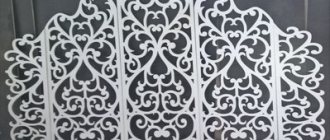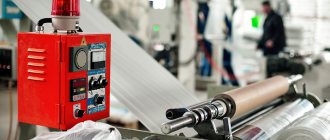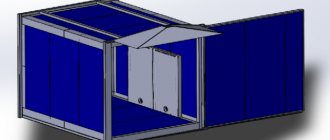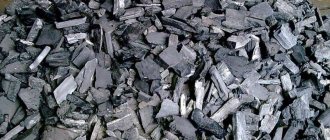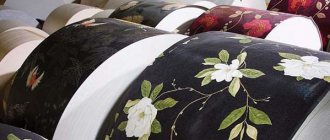Bookmarked: 0
The production of corn sticks involves the creation of a special production workshop in which this product is prepared and packaged in plastic packaging of 50 and 150 grams. The products are positioned at an average price and are sold in the regions where this workshop is located.
The main target audience is low-income families with children. The main place for selling corn sticks is off-site trade and regular retail stores in the production area.
Before we begin
Research raw material prices and competition in your region. Demand for corn sticks is stable. But you will have to fight for markets. The cost largely depends on the price of raw materials. It is important to find reliable suppliers before starting production and draw up a business plan based on their proposals.
Prospects for the production of corn sticks in your city
Corn sticks are a product that is popular among young and middle-aged children, who regard it as a treat. In addition, the product is healthy, very nutritious and does not contain allergens, so parents are happy to buy crunchy sweet sticks for their children. Some families have developed a tradition of giving their children corn sticks with milk for breakfast.
According to food market statistics, the consumption of this product by the Russian population increases by approximately 12-13% per year and does not depend on market conditions, i.e. the sales market is stable.
These products sell well and do not depend on the season of the year; corn sticks are popular in winter, spring and summer. The cheapness and availability of the products from which corn sticks are made make it cost-effective and not difficult to produce. The ability to customize the equipment in terms of changing the release shape (thickness and length) makes a creative approach to design possible.
And changing the amount of ingredients from the “classic” ones changes the taste and color of the final product. A creative approach will stimulate the consumer’s desire to try something new and “keep” it by offering new tastes and designs, which will allow for endless development and support of the business.
Main risks
The demand for corn sticks does not depend on the season and other factors. The instability of raw material prices poses a certain danger. They largely depend on weather conditions and corn yields. If you plan to supply supplies outside of one region, it makes sense to create a business in the climate zones most suitable for growing this crop.
Significant risks are associated with logistics. Competition in this area is quite high, therefore, the search for new markets must be very active. You can win the hearts of customers only with the help of impeccable quality and serious investments in an advertising campaign.
Business relevance
Sweet corn sticks are a simple and inexpensive dessert made from corn grits and powdered sugar. It was invented in the USA at the end of the 19th century, but quite quickly the simple airy sweetness spread throughout the world. In the USSR they were prepared not only from corn, but from rice cereals. Manufacturers experimented with cereals, flour, powdered sugar, chocolate coating and oils.
There is no exact data on the dynamics of demand for corn sticks. However, the assortment of any supermarket includes this dessert from different manufacturers. It can be assumed that the demand for the product is moderate, but does not depend on the season. It is definitely inferior to chocolate, cookies, and waffles in popularity. But it costs the manufacturer much less, being characterized by low cost and ease of manufacture. From this point of view, the production of air sticks is relevant as a business idea.
Corn sticks are a popular and inexpensive dessert made from corn grits and powdered sugar.
Now about the cons. The reputation of the product was spoiled by enterprises that over the past few decades have used low-quality oils, artificial flavors and skimped on powdered sugar. Corn sticks are high in carbohydrates and have a calorie content similar to that of chocolate (approximately 500 calories per 100 grams, depending on the amount of powdered sugar), which makes the product suitable only for limited consumption. During heat treatment, corn grits loses vitamins, and the final product is useless for the body. Correct positioning of the product and the use of quality ingredients will help correct these shortcomings.
Market analysis
A business plan for the production and sale of corn sticks should include not only the organization of the enterprise and start-up investments, but also potential distribution channels. will sell the bulk of its products Opening your own retail outlet with one category of goods is impractical, at least in the first stages of work.
A good idea would be to sell sticks online in small wholesale . Some families are interested in purchasing several tens of kilograms of product at a better price than in the store. There should be no problems with transporting orders: the product is voluminous, but light and not fragile. Another sales option is confectionery manufacturers. This product is the basis of the popular Golden Key cake.
Location
Ideally, you should look for free space on the territory of food factories. These premises are best suited to the requirements of the production of corn sticks. If there are none in your region, abandoned factories and warehouse complexes will do. In many cases, entrepreneurs rent a plot of land and build prefabricated buildings and sandwich panels. Experts recommend choosing this option if the estimated costs of repairing and bringing the building into compliance with SES standards exceed 250,000 rubles.
To organize a workshop with a capacity of 30 kg of corn sticks per hour, a room of 60 m² is sufficient - this area is indicated in the technical documentation of production lines of similar capacity. A warehouse of raw materials requires a room of about 25 m², a similar area will be required for a warehouse of finished products. According to sanitary standards, utility rooms for employees should be equipped, the minimum area is 20 m².
If we talk about location, convenient transportation and equal distance from suppliers of raw materials and buyers are important. As a rule, it is profitable to open production in the suburbs of megacities and regional centers.
Production technologies
The technology for producing corn sticks has its own algorithm:
- At the first stage, corn is cleaned from impurities and low-quality grains on a vibrating tray.
- Salt is added to clean grains in a ratio of 1% of the total mass of grains.
- After adding a small amount of water, the grains are mixed.
- At the next stage, the raw material enters the extruder, where it is heated to 170-190 ° C and treated with water steam. Under the influence of temperature, the grains increase their volume and, when mixed, form a plastic mass. Under high pressure, it is supplied to special holes, emerging from which it expands, turning even more into foam. Special knives cut it off, giving the foam elements the familiar shape of sticks. They are blown away with air and dry completely at the next stage.
- The next stage of production, the panning machine adds powdered sugar and other elements that improve the taste to the sticks.
- The filling machine packages the resulting product.
Cooking process
There are several recipes for making corn sticks. The simplest one includes corn grits itself, water, salt, sunflower oil and powdered sugar.
The incident ratio is calculated based on the norm per 1 ton of finished sticks:
- 720 kg – corn grits;
- 7 kg – table salt;
- 130 kg – powdered sugar;
- 130 l – sunflower oil.
In some cases, flavorings such as cinnamon or vanillin are added.
Equipment and premises
The corn sticks production line includes special equipment. Its productivity is calculated based on the required quantity of the finished product.
Prices for each element of the line vary depending on its capacity and country of origin. An extruder with a capacity of 30 kg of finished product per hour costs an average of 443 thousand rubles. A similar device, but with higher productivity - up to 100 kg per hour, already costs 2,830 thousand rubles. The price for the most powerful extruder with a production capacity of up to 250 kg of product per hour is about 4,320 thousand rubles.
In addition, the production will definitely need a grain mixer, a powder mill with a dispenser, a trestle, an oil supply unit, a vibrating chute, a coating drum, and a conveyor belt.
The production line can be placed on an area of 100 m2, where 60 of them will be spent on placing the tape itself, 25 for warehouses, and 15 for staff premises.
Raw materials
The quality of the final product depends entirely on the quality of the corn grits. This is why you will need a reliable cereal supplier. Farms in the Krasnodar and Stavropol territories are considered the best in this matter. The climate of these regions is ideal for the ripening of corn. Before purchasing a large batch of raw materials, it is necessary to have its quality assessed by an expert.
Staff
Several people are needed to maintain and manage a small production facility. First of all, he is a competent technologist. He needs to have 2-3 workers and one mechanic as his assistants to service the machines. You will also need 2 packers and 2 warehouse workers, a driver, an accountant and a marketer. They will be managed by the production manager.
Equipment
The production line for making corn sticks consists of the following machines:
mixer for preparing cereals; extruder; mill and dispenser for powdered sugar; overpass; apparatus for preparing and supplying oil; vibrating tray for sifting; coating drum; filling machine; band conveyer.
The cost of the line largely depends on the performance of the extruder. If you plan to start with a volume of 30 kg of sticks per hour, the price of the equipment will be about 450,000 rubles. Installation and setup costs 100,000 rubles.
You will need a truck, since the manufacturer takes care of delivery of the products. In general, full production equipment will cost approximately 600,000-700,000 rubles.
Corn Sticks Production Line
One line includes:
- corn chaff mixer;
- apparatus for the production and dosing of sweet powder;
- equipment suspension;
- automatic feeding and dosing of oil;
- extruder;
- screen (sifter);
- electric coating drum;
- belt lift.
Our industry produces three types of extruder options, on which the productivity and entire cost of the project ultimately depends. The first option is a low-capacity extruder (from 20 to 32 kg output per hour), the price of such a device is from 160 thousand rubles. Option 2 is an extruder of medium productivity (from 93 to 110 kg per hour), the price of such an extruder is from 500 thousand rubles. and option 3 is a high-capacity extruder (up to 260 kg per hour), the price of such an extruder is from 1,400 thousand rubles.
As for the space for placing equipment, a room of 100 square meters is sufficient for a small and medium-sized extruder. m. Of which 61 sq. m. is allocated for equipment, 24 sq. m. are warehouses for raw materials and racks for finished goods, the rest of the area is household premises and locker rooms.
Technology
Corn grits are cleaned of impurities on a vibrating tray. Then add salt at the rate of 1% of the total amount of the mixture. If the moisture content of the cereal is less than 12-13%, water is added before loading the salt. Then the mixture goes into an extruder to make corn sticks. The finished products are fed into the installation for applying additives - powdered sugar, cinnamon, vanillin, vegetable oil. Then the finished corn sticks go into the packaging machine. There they are packaged.
Raw material consumption for the production of 1 ton of corn sticks:
cereal – 720 kg; butter – 130 kg; powdered sugar and additives – 130 kg; salt – 7 kg.
How to make corn sticks with flavoring additives
At the next stage, after the products leave the extruder, they are dried in a special drum. Next, the sticks enter the coating complex - this is a device that resembles a long drum, with the help of which powdered flavoring additives are applied to the products. At the same time, vegetable oil is supplied through the sprayer. It is heated inside the drum and sprayed evenly in a small amount onto the corn sticks. How are they glazed? Read on.
After the sticks are saturated with oil, they go into the next compartment of the drum. Here they are sprinkled with powdered sugar on all sides. When it comes into contact with warm vegetable oil, it melts, forming a sweet glaze on top of the product. At the next stage, ready-made sticks come out of the drum. Then they are packaged by special equipment in automatic mode. Finished sticks are packaged and sent to the warehouse, and then directly to the wholesale buyer.
Personnel
The most important person in production is the technologist. This person monitors the quality of raw materials and adherence to technology. Also, his responsibilities include developing new recipes. Despite the fact that the basic manufacturing technology is standard and largely depends on the quality and serviceability of the equipment, you can experiment with flavoring additives.
To service the production line in one shift, 4 people are enough:
2 operators; 1 service technician; 1 loader.
Also, you should hire storekeepers - for the warehouse of raw materials and finished products. Even in a small production of corn sticks, one accountant will not be able to cope with the full amount of work; it is necessary to hire at least 2 qualified specialists.
An active marketing policy and searching for new customers is the most important factor in the success of your enterprise. An experienced manager who will be responsible for this area of work should be invited from the very beginning.
If you have your own transport, drivers and loaders are needed to deliver finished products.
Process of releasing corn sticks
An important advantage of the planned business is the simple technology for the production of corn sticks. All stages of production here are carried out using special equipment, and therefore the share of manual labor is reduced to a minimum. The technology for making corn sticks involves mixing raw materials in certain proportions and further thermal and mechanical processing. But despite the simplicity of the steps, it is the product recipe that plays a big role here. The taste and quality characteristics of the sticks will ultimately depend on the ratio of the components. And since every operating enterprise keeps secret the ratio of all substances used, a qualified technologist should be hired for production, who will experiment with the recipe, and in the future will control the process of producing sticks, monitoring the input raw materials and technological regimes. In general, the corn sticks production line processes the following raw materials:
- corn grits,
- powdered sugar,
- sunflower oil,
- salt,
- water.
To reduce the cost of producing corn sticks, it is worth agreeing with suppliers on wholesale supplies of raw materials. And it’s great if the bases are located as close to the workshop as possible.
Documents and licenses
The peculiarities of organizing the production of corn sticks allow you to register a business in the form of an individual entrepreneur or a legal entity. OKVED codes – 52.27.39; 52.1.
The premises and equipment are assessed by sanitary services and fire supervision. It is important to ensure effective ventilation, proper drainage and reliable electrical wiring necessary for the operation of the equipment.
The production of corn sticks does not require mandatory licensing. But to obtain certificates, it is necessary to draw up documentation on technical conditions and processes and go through the registration procedure. To carry out this work, you should hire specialists who are familiar with the topic and have extensive experience in passing all stages of certification.
Business plan development
When drawing up a business plan for the production of corn sticks, you should take into account the cost of equipment and its installation, raw materials used for the production of corn, rental costs, wages, taxes, and advertising. At the initial stage of organizing your own business, the amount of financial investment will be about 1 million rubles.
A small-capacity extruder will produce about 240 kg of products in one work shift, and up to 60 tons per year. Calculations taking into account wholesale prices show that income from sold corn will be approximately 6 million rubles. with the cost of a 50-gram package being 5 rubles.
Thus, the payback for the sweet corn production business will be from 1 to 2 years.
Marketing
All manufacturers strive to get a large chain of grocery stores as a client. But this is not easy to achieve:
- There is a high entrance fee.
- Large chains prefer to deal with popular brands. You will have to invest well in advertising and work on popularizing your brand.
- Your capacity may not be sufficient to ensure timely deliveries. Therefore, leading networks prefer to cooperate with large manufacturers and rarely enter into agreements with newcomers.
There is no point in refusing to cooperate with large wholesale buyers. Simply expect a long road to getting your first contract. First, it’s worth establishing sales to local stores, bread stalls, and fast food establishments. An excellent move is to create your own distribution network for corn sticks in local markets. Outbound trade made it possible to popularize the product and provided sales to many beginning and small producers of corn sticks. This is a proven implementation method.
Massive media advertising is expensive. But at the start, while you are setting up production and do not have full confidence in your ability to provide consistently large volumes of products, it is not needed. Print out colorful brochures and distribute them to small wholesale customers. Promotions and prize draws work great.
The most important point is quality and innovation. If you develop original and tasty supplements, including vitamin ones, your products will be searched for purposefully. It is worth expanding the range through the production of corn pillows, flakes and other popular products.
Sales channels
Product sales channels depend on certain factors: the scale of production and the cost of the product. Well-known retail chains agree to take only branded goods - those that are known to consumers and have developed advertising and promotion. They demand high fees for selling goods. It is important for chains that deliveries are timely and to all stores at once.
For small companies engaged in the production of corn sticks in the area of one city or region, it makes sense to structure the process of selling goods differently, for example, to create their own distribution network, such as outbound trade in different areas of the city. You can sell your products through local small grocery stores, tents and stalls in the city, delivering them using your own transport.
Profitability
The initial investment in organizing the activities of the enterprise, including the creation of inventory and an advertising campaign, is about 1,000,000 rubles. A reserve of funds should be provided to cover current and unforeseen expenses for 3 months of work.
A production line with a capacity of 30 kg of corn sticks per hour produces 240 kg per shift. At 100% load, monthly output is 60 tons.
The cost of production of 1 ton of corn sticks, taking into account raw materials, packaging materials, wages and energy costs, on average, is 30,000 rubles. The wholesale price of 1 ton of corn sticks is 100,000 rubles. Your monthly revenue will be 6,000,000 rubles. After deducting taxes, transport and other current expenses, the net profit will be 4,500,000-5,000,000 rubles.
Feasibility study for production
Start-up investments for opening such a production include:
- purchase of a line for the production of sweet sticks, which has a productivity of up to 30 kilograms per hour - 443,500 thousand rubles;
- purchase and installation of equipment – 100,000 rubles;
- repair of the workshop in accordance with sanitary requirements - 200,000 rubles;
- creation of inventory – 200,000 rubles;
- other expenses – 50,000 rubles.
The total starting investment in such a business project is 993,000 rubles. Approximate annual revenue is 6,000,000 rubles. Payback of production occurs 3 months after the launch of the workshop. 100% productivity after 6 months of starting the business. Profitability is 25%. The return on investment occurs in approximately 18 months.
From all of the above, it is clear that the production of corn sticks is a well-returned and profitable business idea. The main thing when opening such a production is not to forget about a high-quality and detailed business plan.
Source.
What equipment allows you to produce corn sticks?
Line producing corn sticks.
Drums in the foreground Modern production facilities are equipped with special lines consisting of several pieces of equipment connected by conveyor belts. This approach allows the product to be produced without interruption. At the beginning of any line there is a mixer into which the cereal is loaded - here it undergoes preliminary preparation. Also, many lines have a built-in mill, which allows you to obtain powdered sugar from sugar.
Interesting: How and from what is instant coffee made? Description, photo and video
The line continues with an extruder, coating equipment, a powder dispenser, and a packaging device. The power of the lines can vary; it can be either low or high; depending on this indicator, the unit allows you to create from 30 to 250 kg of product per hour. Each individual batch takes approximately 10 minutes to make. Modern models do not require the constant presence of an operator; they are fully automated.
The corn stick business: a story worth following
Experienced businessmen who have been through fire, water and copper pipes say that three-quarters of success depends on the right choice, and only a quarter on diligence. On the one hand, it is logical to be guided by the proverb “cut down the tree that you carry away,” on the other hand, “keep your eyes open.” Igor Zakharchenko, a 27-year-old Nizhny Novgorod resident, at the beginning of 2020, decided to organize his own business and began to analyze the situation. “I was painfully thinking about what to do so that, firstly, I could master what I started, and, secondly, have guaranteed demand,” the already established entrepreneur told an EquipNet.ru correspondent.
According to the businessman, it seemed that fate itself suggested the idea. Once, on another family trip to Auchan, his three-year-old daughter Alenka picked up several packs of corn sticks. Actually, nothing special happened, but after the girl, an older boy repeated the same thing, and then completely - the adults came up to the shelf and also took a pack of a sweet and at the same time affordable product. And then Igor intuitively thought, why not think about his production of corn sticks. After all, there is demand if the price is reasonable.
“The sticks were surprisingly light, even my little daughter carried them without difficulty,” Igor shared his memories. “The thought immediately came to mind that they consist largely of air, therefore, with a high degree of probability, the business should be highly profitable.”
That evening, Zakharchenko began surfing the Internet to get an idea about this business. It turned out that intuition and logic did not let him down. It turns out that in sticks, air actually occupies up to 70% of the volume, and the corn mixture – 30% . As for potential demand, in Russia on average there are 7 kg of edible corn products per person, and in the USA - 29 kg. As they say, until America grows and grows. But the most important thing is that the technical process has been worked out to the smallest detail and clearly does not promise any pitfalls. In other words, there were surprisingly many informative articles on this topic, and often they literally pushed the equipment.
Under the protection of common sense and Russian law
Igor has known for a long time that it is the rational choice of equipment that is the measure of a successful start in business. Among his acquaintances were guys who “burned out in entrepreneurship” because of frivolity, succumbing to the persuasion of sellers. Meanwhile, a review of the forums revealed a number of patterns that cannot be ignored.
Firstly, it is advisable to abandon Chinese technology. It's not even that it may be of low quality. Be that as it may, the PRC has achieved high results, and many corporations in the Middle Kingdom value their brand. At the same time, in our market there are unscrupulous fly-by-night dealers who “push iron from unknown basement cooperatives” under the guise of branded Chinese equipment . “Even if the probability of this event is estimated at a fraction of a percent, where is the guarantee that this “lucky” person will not be me,” Zakharchenko decided. – This is exactly the case when you need to play it safe. God forbid it doesn’t work, you won’t find any ends. In addition, no one canceled the service. This means there must be guaranteed contact with those who produce and serve in their native Russian language. They won’t explain themselves in Chinese.”
Secondly, it is wise not to consider Western equipment from the very beginning. Its price includes costs denominated in euros, including salaries of producers. And this automatically removes European equipment from the category of equipment that pays off on the Russian market. Alas, these are the consequences of the past devaluation of the ruble. This is the same fact as snow in winter, or heat in summer.
That is why Igor firmly decided to buy Russian equipment. “Judge for yourself,” explains the businessman, “if the equipment is broken or does not meet the stated characteristics, the entrepreneur has a good chance of suing for his costs. And legal protection in our case is the most powerful argument, or, as people say, “only I carry my head proudly in my forest.”
Reputation as an argument
Everyone has phobias. Even more so for novice businessmen. “My head was spinning from my thoughts,” recalls Igor. – I had some money, my parents also promised to “throw in” a couple of hundred thousand, and what was missing could be taken from the bank. So the finances seemed to be clear, but I wanted to immediately come to a working production facility. What if the technical process doesn’t work, and then – what? Catastrophe? So I suffered from insomnia at night.”
It is clear that in the time of “His Majesty the Internet” it will not be difficult to find a website for a reputable manufacturer of Russian food equipment. Therefore, the period of doubt for Igor ended quite quickly, as soon as the aspiring businessman discovered. It turns out that this company produces not only food equipment, but also highly complex packaging machines developed by its engineers.
Igor made inquiries, talked with knowledgeable people and came to the conclusion: “this is what we need.” The impeccable reputation spoke for itself. But it is equally important that RT specialists promised to provide maximum assistance in the process of establishing a business.
Full construction
Of course, any business has its own nuances, and the production of corn sticks is no exception. That is why RT specialists know how important it is not to leave a businessman alone with equipment that is still unknown to him. After all, even in order to drive a car, you need to graduate from a driving school. “I explained my concerns to the managers of Russian Trapeza,” says Zakharchenko, “then I heard that the equipment was not only delivered on time, but also installed turnkey . That is, he turned it on and started producing.”
Here it is useful to remind you what the technical process of making corn sticks consists of and what equipment is needed for this. The main raw material, as you know, is corn grits, which is fed into the loading capacity of the screw - and then into the storage hopper of the extruder. There, the raw materials are dosed, as required by the regulations, and then sent directly to the extruder, where, in fact, corn sticks are produced. To bring it to a marketable product, in the panning complex the sticks are processed with wet components (vegetable oil) and dry components (salt, powdered sugar, vanillin).
Let us remind you that the entire process is automated , thereby ensuring the required uniformity and attractive taste. It is also important that the extruder is equipped with a turbo unit, which equalizes the pressure in the extrusion zone, thereby improving the uniformity of the product and doubling the service life of the screw and housing. In general, equipment made of stainless steel is designed for round-the-clock operation, naturally, with proper maintenance and timely replacement of consumables.
As for productivity, the extrusion line for the production of corn sticks is capable of producing up to a ton of finished products per shift (up to 120 kg per hour). That is, we are talking about serious production, while the total power consumption does not exceed 30 kW hour.
Numbers as food for thought
If you go to online grocery stores, the average price of corn sticks by weight starts from 135 rubles per kg, and packaged ones – from 350 rubles, that is, from 135 thousand and 350 thousand rubles per ton, respectively. “There is a good reason to purchase a packaging machine there at the Russian Meal. – Explains entrepreneur Zakharchenko. “This not only increases the shelf life of the product, but also its attractiveness to supermarkets and ordinary customers.”
To make the picture more complete, we will give approximate production costs. So, for one ton of corn sticks you will need corn grits - 720 kg, salt - 7 kg, powdered sugar - 130 kg and sunflower oil - 130 liters. Taking this into account, as well as all costs, including wages to workers and taxes, Igor has a cost price in the range of 70-90 thousand rubles per ton of finished products. Consequently, the daily income of an extrusion line for the production of corn sticks can reach 50 thousand rubles per shift . Impressive, even taking into account underemployment, Zakharchenko sums up.
This margin of safety allows you to go through the most difficult initial period, when there are no commercial agreements yet, and the path to the shelves of supermarkets and stores has yet to be overcome with minimal risks.
At the same time, the cost of the extrusion production line, including the cost of turnkey installation, is 1,500,000 thousand rubles. As a result, the break-even point for the Nizhny Novgorod guy was passed in less than six months. And now businessman Zakharchenok, despite all the difficulties of the crisis, feels like a person standing firmly on his feet. Thus, the story told is worthy of emulation. And those who follow Igor’s path will again be helped.
Alexander Sitnikov, specially for Equipnet.ru
RUSSIAN TREAT LLC
199178, St. Petersburg, Maly Prospekt V.O., building 57 bldg. 3
https://rt.ru
